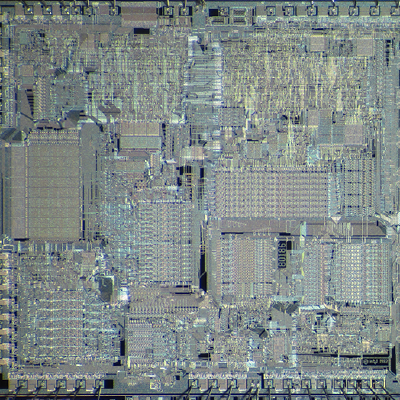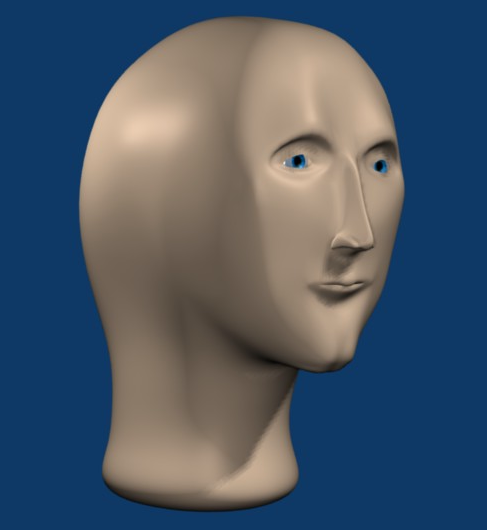

Don’t call me out like that! (also 2n3904 and 2n3906 my beloved)
Moved here from lemmy.world. Long live piracy!


Don’t call me out like that! (also 2n3904 and 2n3906 my beloved)


Because that’s the point


In criminal cases. In civil suits someone always loses, so an average person cannot win more than 50% of cases.


Finally the mathematically correct answer! Thank you for typing this out


Mads Mikkelsen
Also called “real estate”
If the licence is already open source then they can’t do shit. Unfortunately, they have other methods of discouraging programmers from working on the project, but ultimately open source will prevail.
You accidentally added a dot at the end of the link. Here’s the fixed one https://google.github.io/styleguide/cppguide.html
The main verb is most often in the second position, the second verb you are referring to is a placeholder for an auxiliary verb that usually is a different form of a previously main verb
Remember kids, piracy is not only moral, but a moral obligation in this capitalist hellscape! (and not theft by definition, and should not be illegal) Torrents are one of the few effective weapons against corporations
https://www.ncbi.nlm.nih.gov/pmc/articles/PMC8901252/
It is difficult to provide a valid estimation of real frequency. There are only a few own observations in the literature and a lot of citations.
We performed a search in our radiologic database, looking for situs inversus as key words in the results. Between 2006 and 2020, 217,646 imaging examinations (ultrasound, CT and plain radiography) were performed at the Department of Transplantation and Surgery, Semmelweis University. Out of them, 21 cases were found, which represents a 1:10,000 frequency. This hospital-based prevalence rate best reflects Adams et al in 1937 (23:232,113), and Lin et al in 2000 (20:201,084) from Massachusetts, as data from own observations.26 This rate is similar as well to the population-based Baltimore-Washington Infant Study.12 SIT is slightly more frequent in males: 1.5:1.27
https://www.healthline.com/health/situs-inversus#symptoms
Because the condition seldom causes symptoms and is so rare, a person may not know they have it. And it may not be discovered until visiting a doctor for a different reason.
https://my.clevelandclinic.org/health/diseases/23486-situs-inversus
You may not develop any symptoms with situs inversus. Although your organs are reversed, they’re often still functional. So you wouldn’t notice any signs or complications.
Of course, trying to estimate how many people don’t know about a disease is a difficult task, but the general consensus is the condition is rare and often doesn’t produce any symptoms, as such there are definitely many people with the condition that haven’t even ever heard of it.
In fact many of them don’t, since the body is mostly symmetrical and apart from cutting them open or doing an MRI, you can’t really tell (which isn’t a big deal in most cases, because most medical procedures work regardless of this condition). Also, the heart is located almost in the middle, so there is not much difference.


Except the first assumption that e^x = its own integral, everything else actually makes sense (except the DX are in the wrong powers). You simply treat the “1” and “integral dx” as operators, formally functions from R^R into R^R and “(0)” as calculating the value of the operator on a constant-valued function 0. EDIT: the step 1/(1-integral) = the limit of a certain series is slightly dubious, but I believe it can be formally proven as well. EDIT 2: I was proven wrong, read the comments


If you take a closer look, they are actually quite spacious


Because it pumps heat from inside to the back, so if the back is blocked it will struggle to pump heat into that tiny overheated space


1337x dot to for example


As long as you don’t use them, sure. They are composed of basic parts, just well adjusted to the purpose. But if you do decide do use them, be aware that you cannot interfere with any radio communications in any way and/or destroy someone’s property. Which does not mean I am against shooting down someone’s drone on your property that is spying you, it’s just not really legal per se.
Niche? Are you a lunatic? The 3D printing industry is one of the fastest growing fields in the world. 3D printing is getting cheaper and cheaper compared to eg. CNC machining. The industry is a very important one, because it allows you to create accurate parts much more quickly that to drill a block of metal. And all this not even mentioning that this required mostly general computer science skill, I hope you won’t call the computer science field niche?
But why would you? You should be able to use any sources you want to learn whenever you want, just be prepared for the exam. I wrote hundreds useless homeworks like this in middle school and I remember nothing from most of them.
stop I beg you 😭